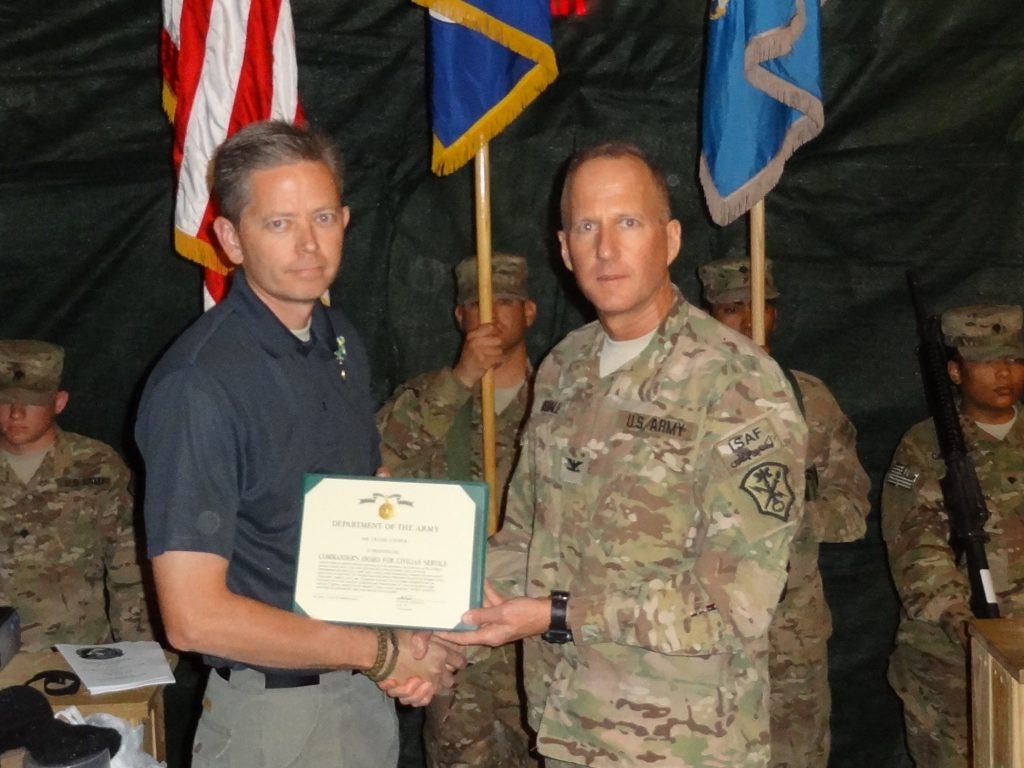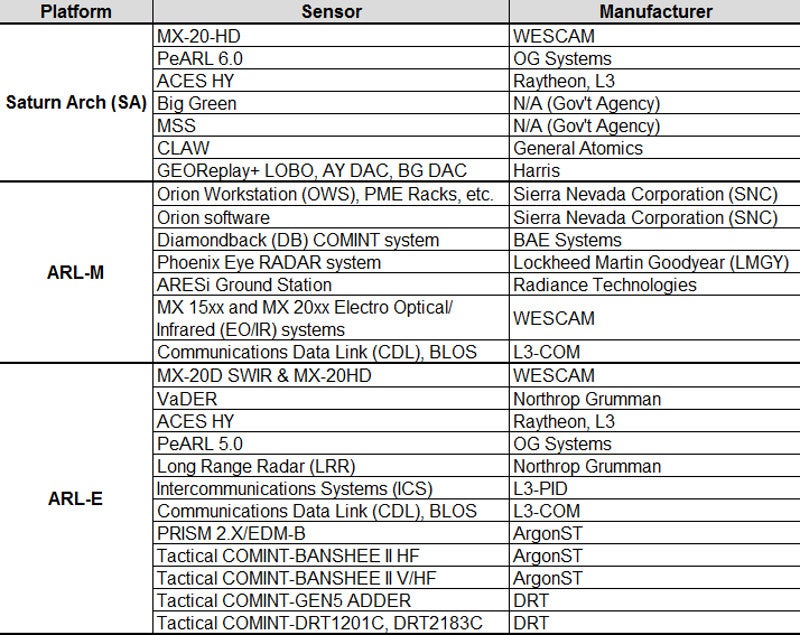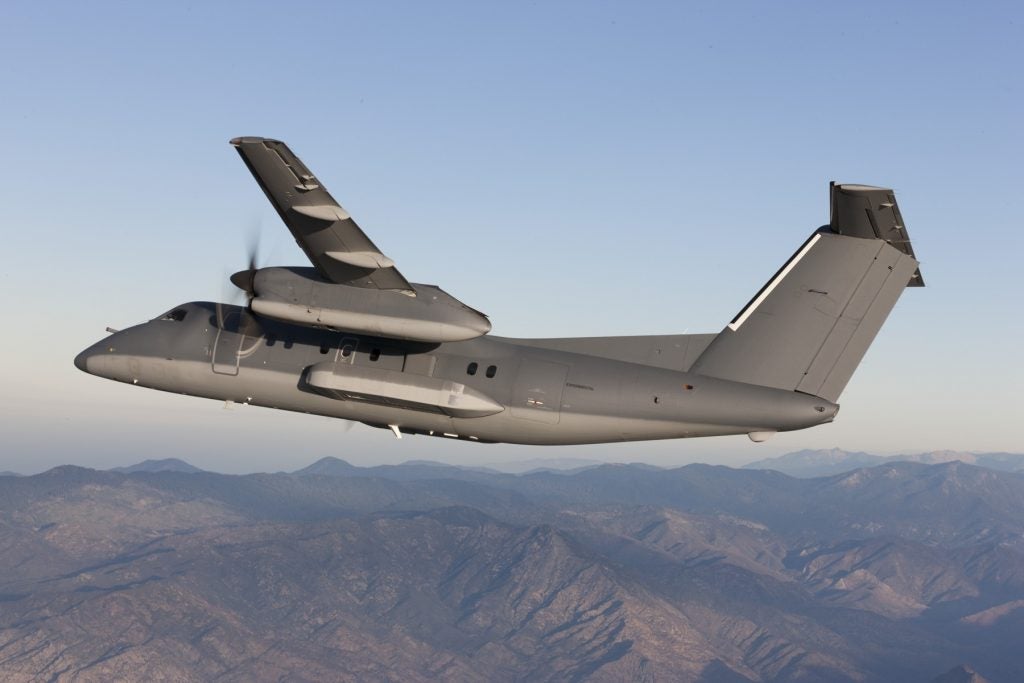Saturn Arch Ends CENTCOM Mission
On 31 July, 2022, the Saturn Arch airborne sensor platform, based on the De Havilland Canada DHC-8 airframe, flew its last mission in support of the US Central Command (CENTCOM). According to a US Army press release that announced this final flight on the 11th, Saturn Arch aircraft were withdrawn from the CENTCOM area of responsibility alongside the overall drawdown in forces in Afghanistan and Iraq in 2021. The press release also states that the Saturn Arch aircraft have flown a total of 72,500 hours and produced more than 18,000 intelligence products over their 10-year lifespan. It is not mentioned whether this figure is total across the entire program, or just within CENTCOM.

Originally created by the National Geospatial Intelligence Agency (NGA), the Saturn Arch program had the task of making use of the sensors to detect and identify IED threats in Afghanistan, starting in 2010. It soon became apparent that the suite of intelligence gathering tools aboard the Saturn Arch could be used for more than just counter-IED work, and so in March 2013 the Saturn Arch program changed hands from NGA to US Army Intelligence and Security Command (INSCOM). In a ceremony at Kandahar Air Base, Afghanistan, Col. Adam Hinsdale stood in for INSCOM to assume the mission from Frank Cooper, the lead on NGA’s Process-Exploit-Disseminate team in Afghanistan. Col. Hinsdale was the commander of Task Force ODIN-E (Observe, Detect, Identify, Neutralize – Enhanced), which was established by the Afghanistan and Condor branches of Task Force ODIN in 2012. The organization managing Task Force ODIN, and the Saturn Arch program, would change hands over time: in 2012, that was Project Director Observe Detect Identify (PD ODI), under PM ARES (Project Manager Airborne Reconnaissance and Exploitation Systems). As the ownership of Saturn Arch changed, the mission grew in scope. Between 2013 and 2016, PM ARES became PM (later PD) SAI (Sensors-Aerial Intelligence), which currently operates the Saturn Arch. The Saturn Arch mission expanded beyond just the CENTCOM area of responsibility, with three Saturn Arch airframes noted as being stationed at Camp Humphreys in South Korea and one at Fort Bliss in Texas in July 2017.

The Saturn Arch aircraft are equipped with the unidentified “Mission Sensor System”, and makes use of the General Atomics Claw payload management and L3Harris GEOREPLAY+ hyperspectral management software packages according to an article from The War Zone. In 2014, it was stated during a hearing on defense appropriations that the Saturn Arch was equipped with hyperspectral imaging sensors. According to the same War Zone article, this is the ACES HY hyperspectral camera, which was originally developed as a sensor for use aboard the MQ-1 Predator in 2012. In addition to ACES HY, Saturn Arch has a long-wave infrared hyperspectral sensor called “Big Green”, which was developed by Lawrence Livermore National Laboratory. Saturn Arch also carries the PeARL camera cluster and WESCAM MX-20-HD electro-optical/infrared camera turret.
The Saturn Arch program has evolved over the years to adapt to the current intelligence requirements, and with the end of operations with CENTCOM, the assets tasked to them may be moved to work in South Korea and the US.
A presentation from 2015 showed that the plan at the time was to transfer Saturn Arch-configured aircraft into the Airborne Reconaissance Low program and convert them into RO-6As, with the Saturn Arch Quick Reaction Capability (QRC) ending in Fiscal Year 2017. Clearly, that did not end up happening, with a contract awarded to Leidos in October 2020 to continue to sustain the Saturn Arch QRC program.
UPDATE: August 16 2022
Added more information on “Big Green” based on feedback.

